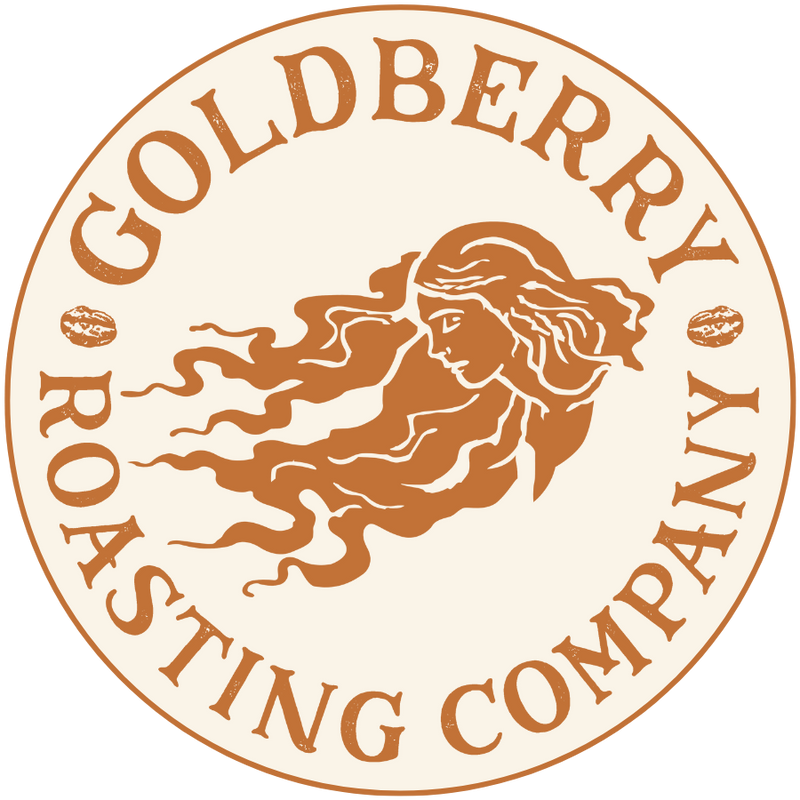How Water Temperature Affects Your Coffee Brew
Posted on August 25 2025,

If you’ve ever brewed a cup of coffee that tasted weak, bitter, or just…off—you’re not alone. One of the most overlooked factors in brewing great coffee is one you can’t even taste directly: coffee water temperature.
At Goldberry Roasting Company, we believe that small adjustments make a big difference. And when it comes to crafting the perfect cup, temperature plays a powerful role in extraction, balance, and flavor. Whether you're using a pour over, French press, or drip machine, understanding how coffee water temperature affects your brew can help you elevate every cup.
What Is the Ideal Coffee Water Temperature?
The Specialty Coffee Association recommends brewing coffee at a water temperature between 195°F and 205°F (90°C to 96°C). This range is considered the sweet spot for optimal extraction—hot enough to dissolve the right flavors from your coffee grounds, but not so hot that it brings out bitterness or astringency.
In simple terms:
-
Below 195°F = under-extracted (sour, weak, or salty)
-
Above 205°F = over-extracted (bitter, dry, or harsh)
Hitting the right coffee water temperature ensures you’re pulling the best possible flavors from your beans—sweetness, acidity, body, and aroma in perfect harmony.
Why Temperature Affects Extraction
Coffee brewing is a chemical process. Hot water acts as a solvent, drawing out oils, acids, and solubles from ground beans. Different compounds extract at different rates—and coffee water temperature directly controls how quickly and how much of those compounds are released.
Here’s how it works:
-
Too cool (below 195°F): Water doesn’t extract enough soluble material. You’ll get a flat, sour cup lacking sweetness and depth.
-
Too hot (above 205°F): Water over-extracts bitter compounds. The result? A harsh, overly intense brew that masks subtle flavors.
Maintaining the proper range allows you to extract all the good stuff—without the bad.
How to Measure Water Temperature (Without a Thermometer)
While a digital thermometer is the most accurate way to measure, you don’t have to use one.
Here’s a quick hack:
-
Boil water
-
Let it sit for 30 seconds off heat
-
You’ll be right in the ideal range of 195–205°F
This is especially helpful for home brewers using a kettle without built-in temperature control.
Brewing Methods and Temperature Tips
Each brewing method has its own rhythm—and coffee water temperature can enhance or disrupt the process if not dialed in correctly.
Pour Over (e.g. V60, Chemex)
-
Ideal range: 200°F
-
Why: You need consistent extraction over 2–3 minutes. Too cool and the water passes through without drawing enough flavor.
French Press
-
Ideal range: 195–200°F
-
Why: Full immersion gives plenty of contact time. Slightly cooler water helps avoid bitterness in longer steeps.
Drip Coffee Maker
-
Ideal range: Automatically set (check if programmable)
-
Tip: Many cheap machines don’t get hot enough. Consider upgrading or boiling water for manual methods instead.
Espresso
-
Ideal range: 190–197°F
-
Why: High pressure and fine grinds extract quickly. Precision is key—too hot and bitterness dominates; too cool and you lose crema.
Cold Brew
-
Water temperature: Room temp or cold
-
Why: It’s a different ballgame. Instead of heat, cold brew uses long steep times (12–24 hours) to extract flavor slowly and gently.
Other Factors That Impact Temperature
-
Preheating your gear: Always preheat your mug, French press, or pour over carafe with hot water before brewing. This keeps your water from cooling too quickly.
-
Altitude: If you live at a high elevation, water boils at a lower temperature. You may need to adjust your brewing time or grind size.
-
Brewing environment: Cold kitchens or outdoor setups can rapidly drop your water temp. Brew indoors when possible or insulate your gear.
Why It Matters for Flavor
At Goldberry Roasting Company, we roast our beans to highlight the best flavor notes—floral aromatics, citrus brightness, chocolatey richness, and more. But none of that shows up if your coffee water temperature is off.
Think of water temperature like tuning an instrument: the beans are the music, but temperature brings it into harmony. If you want your cup to sing, you need to brew in tune.
Brew Better, One Degree at a Time
Great coffee doesn’t require a lot of gear—but it does require a little care. By paying attention to coffee water temperature, you’ll transform your brew from “good enough” to truly satisfying.
Whether you’re a purist with a gooseneck kettle or a weekend warrior with a saucepan and a spoon, remember: a few degrees can change everything.
Want help perfecting your brew? Reach out to us or explore our selection of fresh-roasted beans at goldberryroasting.com—each crafted for balance, clarity, and depth.
